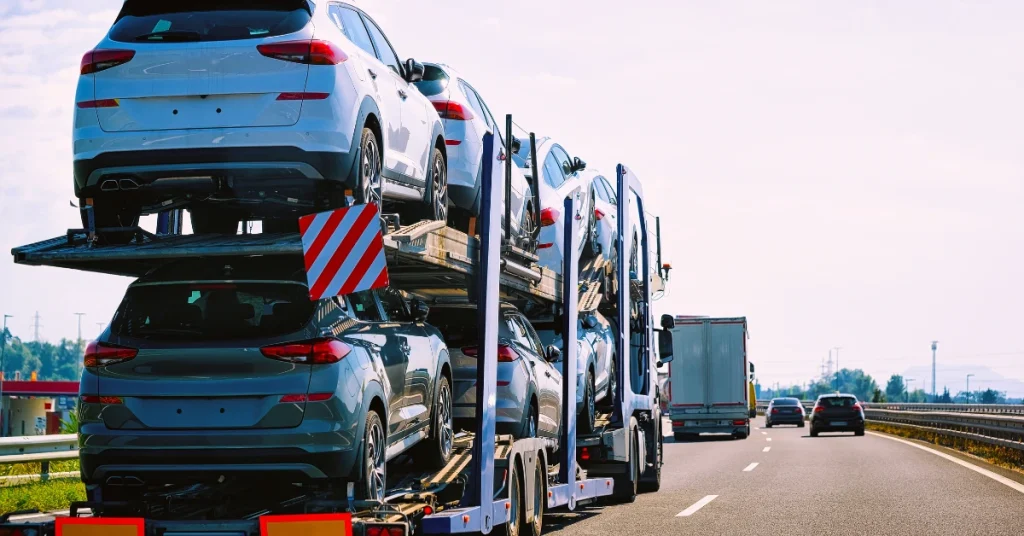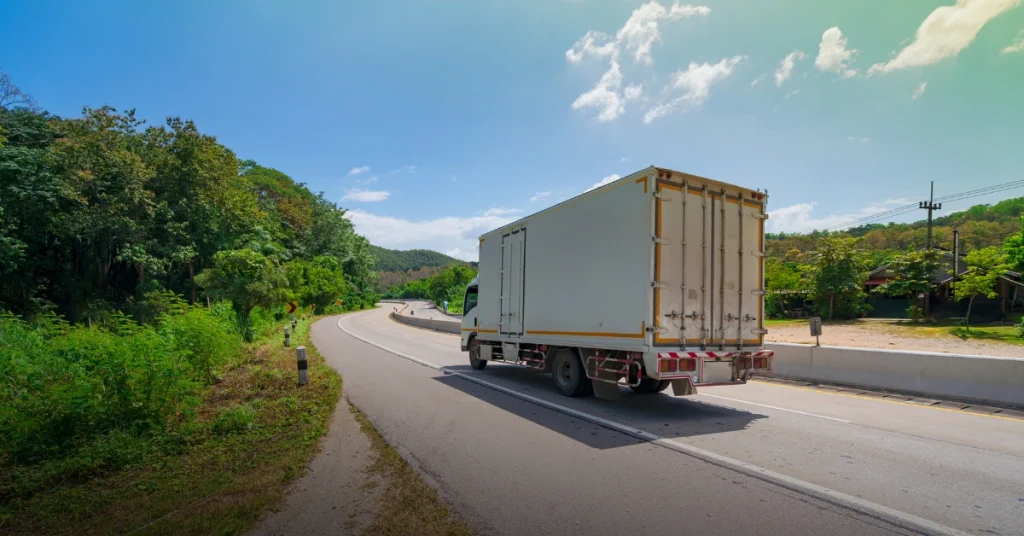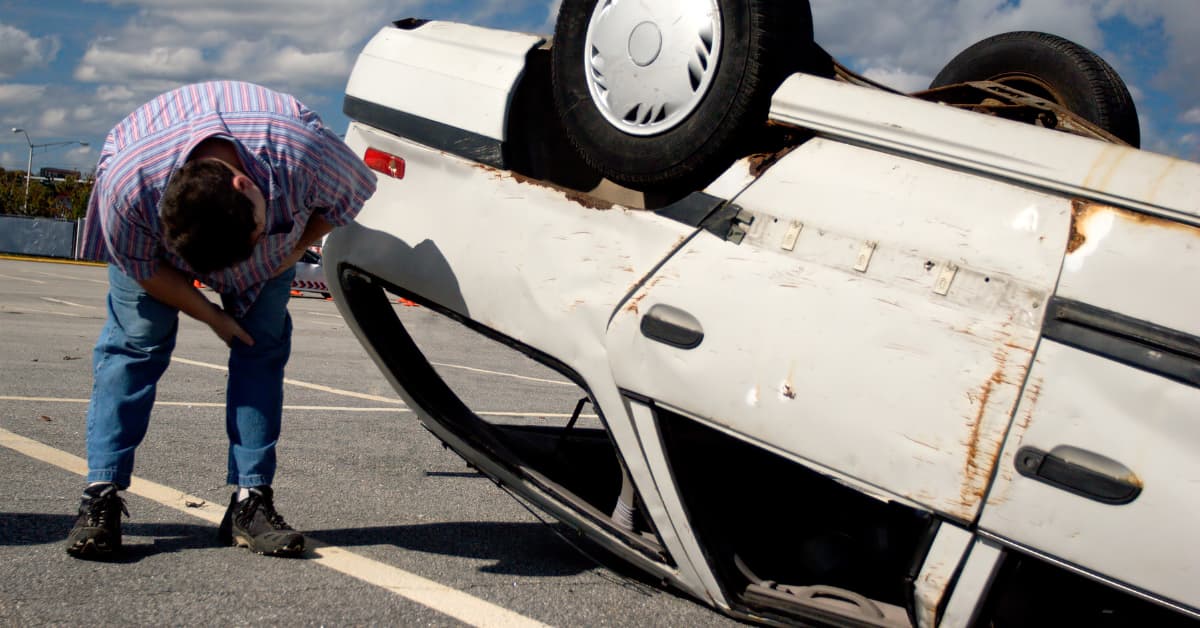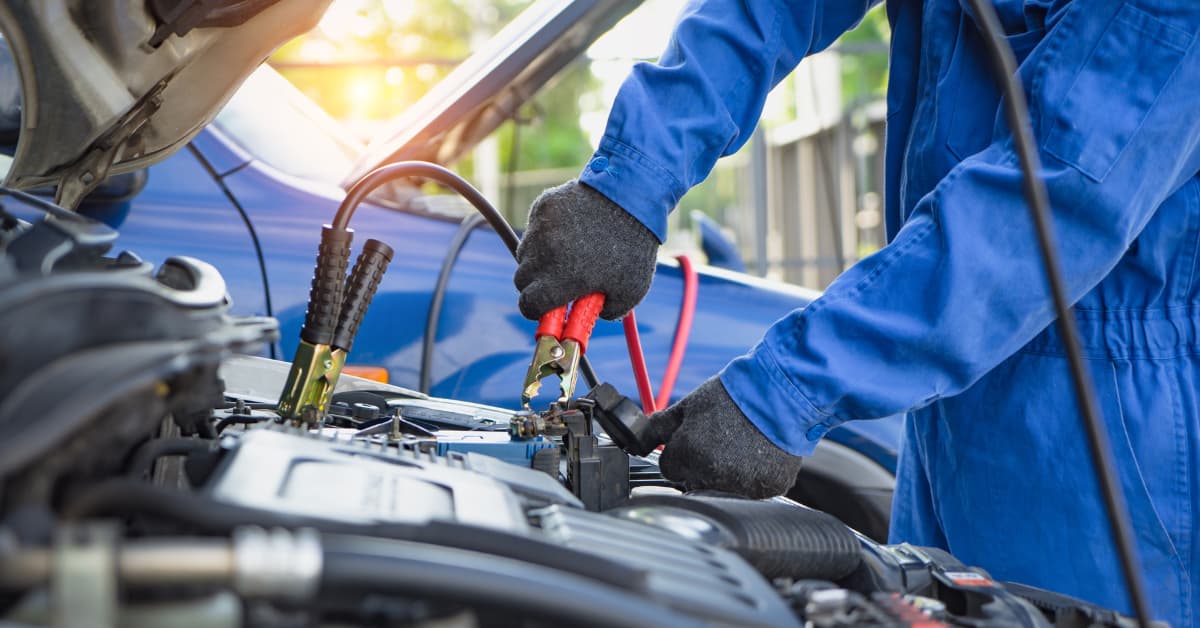When transporting a vehicle, whether locally or long-distance, comparing open vs enclosed car shipping can present a significant decision for consumers. This critical determination requires careful consideration for vehicle safety, cost-effectiveness, and overall service quality.
The decision between open vs enclosed car shipping hinges on various factors, including the vehicle’s value, the owner’s budget constraints, and the specific requirements of the transportation route.
By carefully weighing the pros and cons of open vs enclosed car shipping, consumers can make an informed choice that aligns with their unique needs and circumstances. Reputable providers of auto transport services like Geyers Towing can offer valuable guidance in this decision-making process.
In this blog, we’ll break down everything you need to know to help you navigate this important decision with expert guidance.
Key Takeaways:
-
- Open Car Shipping: A cost-effective and widely used method, ideal for standard vehicles. It offers affordability and availability but leaves cars exposed to weather and road debris.
- Enclosed Car Shipping: Provides maximum protection by shielding vehicles from the elements, making it the preferred choice for high-value, classic, or luxury cars, as detailed in this comprehensive Luxury Car Transport Guide, albeit at a higher cost.
- Vehicle Value Matters: The decision between open and enclosed shipping often depends on the car’s value. Pricier cars may justify the added expense of enclosed transport for better protection.
- Budget and Time Considerations: Open shipping is more budget-friendly, while enclosed shipping offers peace of mind for those willing to pay extra for enhanced security, especially on long-distance moves.
- Choosing a Reputable Carrier: Regardless of your choice in open vs car shipping, selecting a reputable car shipping company with good reviews and safety ratings is crucial for ensuring a smooth and secure transport experience.
- The Final Word: Choosing between open or enclosed car shipping depends on factors such as your budget, the car’s value, and the shipping distance.
Open Car Shipping: A Budget-Friendly Workhorse
Open car transport represents the industry standard in vehicle shipping, offering a cost-effective solution for transporting automobiles. This widely utilized method employs open-air trailers, frequently observed on highways, featuring a two-tier structure that accommodates vehicles on both upper and lower levels.
When comparing open vs car shipping, the prevalence and economic efficiency of open car transport have established it as the preferred option for many consumers and businesses in the automotive transportation sector.
Advantages of Open Transport: Affordable and Efficient Shipping
While open car transport offers numerous benefits, it stands out as a cost-effective and efficient method that caters to a wide range of vehicle shipping needs. Its practical advantages make it an appealing choice for both everyday drivers and businesses seeking reliable transportation solutions:
- Affordability: As open car carriers accommodate more vehicles at once, costs are distributed among customers, making open transport the budget-friendly choice. For many vehicle owners, open vs enclosed transport costs is a major consideration, with open shipping being significantly more affordable.
- Wide Availability: More open car carriers operate nationwide, ensuring faster pick-up and delivery times-perfect for time-sensitive moves or peak seasons. The availability of open car shipping services ensures faster scheduling compared to enclosed options.
- Faster Scheduling: With open transport being the industry standard, scheduling tends to be quicker compared to enclosed transport, providing a practical solution for last-minute car shipping needs.
- Versatility: Open trailers can transport a variety of vehicle types, from sedans to SUVs, catering to most shipping requirements without breaking the bank.
- Reliable and Proven: As the most commonly used shipping method, open car transport has a strong track record of safely delivering vehicles across long distances, making it a reliable option for standard cars.
Disadvantages of Open Car Transport
While open car transport is a cost-effective and widely used method, it does come with certain drawbacks that consumers should be aware of before making their decision on open vs car shipping:
- Exposure to Weather Conditions: Unlike enclosed car transport, open car transport leave vehicles exposed to the elements. Rain, snow, hail, and even UV rays from prolonged sun exposure can potentially affect your car’s exterior during transport.
- Potential for Road Debris Damage: Although rare, vehicles on open trailers may encounter minor damage from road debris, such as gravel or small rocks, especially during long-distance journeys.
- Limited Security: Since vehicles on open carriers are visible and accessible, they may face a higher risk of tampering or theft during transport stops, although reputable shipping companies take measures to mitigate these risks.
- No Protection from Dirt and Dust: Cars transported on open carriers can accumulate dirt, dust, or grime during transit, especially on long-haul routes through areas with unpaved or dusty roads.
- Not Ideal for High-Value Vehicles: For luxury, classic, or exotic cars, open car transport might not provide the level of protection required, making enclosed transport the better option for safeguarding valuable investments.
By understanding these potential downsides, you can weigh the pros and cons of open car transport and decide if this method aligns with your priorities and budget.
Open Car Transport: Handling the Concerns
While open car transport is a widely accepted method, if you compare open vs car shipping, individuals often express reservations about it. Addressing the prevalent concerns associated with utilizing open car carriers will help provide a comprehensive understanding of this transportation method. From weather exposure to the risk of road debris, understanding these factors can help you make an informed decision and ease any worries you might have.
- Weather Exposure: What You Need to Know: With open car transport, your car will be exposed to weather conditions, but most car shipping companies are adept at planning routes and securing your car to mitigate this risk. While rain or road grime might occur, a good wash is usually a simple fix.
- Road Debris: Real Risks or Overestimated? Road debris is often less of an issue than people assume. Cars are loaded strategically to minimize potential exposure. Plus, it’s similar to driving your own vehicle-there’s always a slight possibility of a stray rock chip on the open road, whether your car’s on a trailer or not. For owners of luxury vehicles, the added security of enclosed auto transport reviews often tips the scales when deciding between open or enclosed car shipping
Enclosed Auto Transport: The First-Class Option
Enclosed car transport represents the pinnacle of vehicle shipping services, offering superior protection at a commensurate cost. This premium option utilizes fully enclosed carriers, effectively shielding vehicles from environmental elements and potential road hazards throughout the transportation process.
Enclosed auto transport provides a level of protection that open auto transport simply cannot offer. When considering open vs enclosed car shipping, consumers requiring long-distance vehicle transportation or those with high-value automobiles often find that enclosed auto transport is the better choice for prioritizing vehicle safety and condition preservation.
Advantages of Enclosed Car Transport: Shielding Your Asset
According to a research from Global Market Insights, the global enclosed car transportation service market size was valued at USD 724.2 million in 2023 and is projected to grow at a CAGR of 7% between 2024 and 2032. Enclosed car transport offers premium protection for your vehicle during transit. By shielding the vehicle from external elements, it is the go-to choice for high-value, luxury, and classic cars. Below are the top five advantages of choosing enclosed car shipping:
- Maximum Protection from Weather: Enclosed car transport protects your vehicle from adverse weather conditions such as rain, snow, and hail, ensuring it arrives in pristine condition.
- Safeguard Against Road Debris: Unlike open carriers, enclosed trailers shield vehicles from potential damage caused by road debris like rocks or loose gravel.
- Enhanced Security Measures: Enclosed carriers often feature advanced security protocols, reducing the risk of theft or unauthorized access during transit. When comparing open vs enclosed transport, enclosed carriers offer unmatched protection against potential tampering.
- Ideal for High-Value and Specialty Vehicles: Classic cars, exotic vehicles, and custom automobiles benefit greatly from the added care and specialized handling provided by enclosed transport.
- Maintains Vehicle’s Cleanliness: By protecting the car from dust, dirt, and grime, enclosed shipping ensures that your vehicle doesn’t need immediate cleaning upon arrival.
Disadvantages of Enclosed Car Transport
While enclosed car transport offers unmatched protection, it may not be the ideal choice for every vehicle owner. Here are some disadvantages to consider if you are comparing open vs car shipping:
- Higher Cost: Enclosed car transport is significantly more expensive than open transport due to its limited capacity and added protection features.
- Limited Availability: Fewer enclosed carriers operate compared to open ones, potentially leading to longer wait times for scheduling and delivery.
- Not Necessary for Standard Vehicles: Everyday cars may not require the level of protection offered by enclosed transport, making it an unnecessary expense in many cases.
Enclosed Car Transport: Handling the Concerns
While enclosed transport provides premium protection, some consumers may still have reservations about its higher cost and availability. Here’s how reputable car shipping companies address these concerns:
- Cost Considerations: Reputable car transport providers can help customers weigh the cost against the value of their vehicle. They often offer tailored quotes, allowing car owners to assess whether the added expense is worth the enhanced security.
- Scheduling Challenges: To counter limited availability, many companies recommend booking well in advance, especially for long-distance or high-demand routes. Some providers offer flexible scheduling options to accommodate time-sensitive needs.
Choosing Between Open vs Enclosed Car Shipping
With open and enclosed transport services both being good in different situations, how do you decide which is best for you? Here are key factors to help you determine whether open vs enclosed car shipping is best for your needs
Vehicle Value: Your Car’s Worth Matters
Expensive cars, like classic models or high-end vehicles, typically merit the additional cost of enclosed transport for greater protection. High-value vehicles typically warrant the added expense of enclosed shipping, especially when deciding between open vs enclosed car transport services. On the other hand, open transport is the budget-friendly and practical choice for everyday cars.
Your Budget and Time: Balancing Needs
Enclosed auto transport costs significantly more than its open counterpart. But, the peace of mind might be worth the extra expense if your car is very valuable to you.
While both services offer different advantages, always compare quotes to see what works best within your budget. If you are on a tight budget and need to ship your car, then an open trailer might be best for your needs.
Personal Preference
Some people are naturally more comfortable with the idea of their prized vehicle being transported inside a fully enclosed trailer. They believe it provides an added layer of security that’s worth the extra cost, especially during long-distance car transport.
Consumers who opt for enclosed transport prioritize enhanced protection and security, often valuing these benefits over cost considerations. Conversely, those who choose open trailers typically prioritize cost-efficiency, accepting the associated risks as an acceptable trade-off for the reduced expense.
Researching Car Shipping Companies
After comparing open vs car shipping, no matter the decision you make, pick a reputable company with good reviews. The best car shipping companies often specialize in both open and enclosed auto shipping, as outlined in our comprehensive Car Transport Guide. Check out online reviews and look into their safety ratings and any complaints filed. If a company specializes in a particular type of car transport, they may be able to provide a more tailored service.
For both open car shipping and enclosed options, it’s crucial to compare providers to ensure you’re selecting a reputable company
Open vs Enclosed Car Shipping: Making the Right Choice for Your Vehicle Transport Needs
Choosing the right auto shipping option—open vs enclosed car shipping—ultimately depends on your unique needs and priorities. Carefully assess factors like your vehicle’s value, your preferred timeline, and your budget to make an informed decision. Consulting experts like Geyers Towing can provide valuable guidance, ensuring a seamless and secure transport experience tailored to your requirements.
For expert guidance on open vs enclosed car shipping options along the East Coast, Geyers Towing specializes in auto transport services across states like Maryland, Washington D.C., Florida, and beyond. Learn more about how we ship cars across the country with reliable and professional service.
Don’t leave your vehicle’s safe transport to chance! Contact Geyers Towing today for a free personalized quote and professional advice on the best shipping method for your prized automobile.
FAQs About Open vs Enclosed Car Shipping
What is the difference between open and enclosed shipping?
The main difference lies in the level of protection offered to your vehicle during transit. Think of open transport as shipping on a standard open car carrier—it’s the most common and economical choice.
In contrast, enclosed auto transport offers greater protection as the vehicle is shipped inside a fully enclosed trailer, shielding it from weather and road conditions.
Is enclosed shipping worth it?
It depends on various factors, like the value of your car, your personal preferences, and your budget. For standard car transport needs, open shipping may be sufficient and budget-friendly.
However, if your vehicle is valuable, a classic, or a luxury car, you might consider the added expense of enclosed transport. This offers greater protection from potential hazards like weather or road debris.
For some, the additional peace of mind justifies the higher cost, particularly if shipping their vehicle long distances.
What is the meaning of enclosed shipping?
Enclosed shipping simply means transporting a vehicle secured inside a fully enclosed trailer, making it a completely enclosed shipping method. This method is often preferred for classic car transport, high-value, or exotic car shipping.
The trailer provides enclosed car carriers with a solid floor and solid walls, unlike their open counterparts. The trailer’s walls and roof offer protection from the elements during transport.
While enclosed transport comes with a higher cost, some car owners, especially those transporting their prized possessions, believe the enhanced security and peace of mind justify the added expense.
How do open car carriers protect against road debris?
Cars are loaded strategically on open carriers to minimize exposure to road debris. While some risk exists, it’s similar to the potential for minor chips or damage when driving your vehicle on the road. Proper planning and professional handling reduce this risk significantly.
What are the cost differences between open and enclosed car shipping?
Open car shipping is more cost-effective because it can accommodate more vehicles per trip, distributing the costs among multiple customers. Enclosed car shipping, while more expensive, provides additional protection and is ideal for high-value or classic vehicles. Comparing quotes can help determine which option fits your budget and needs.






